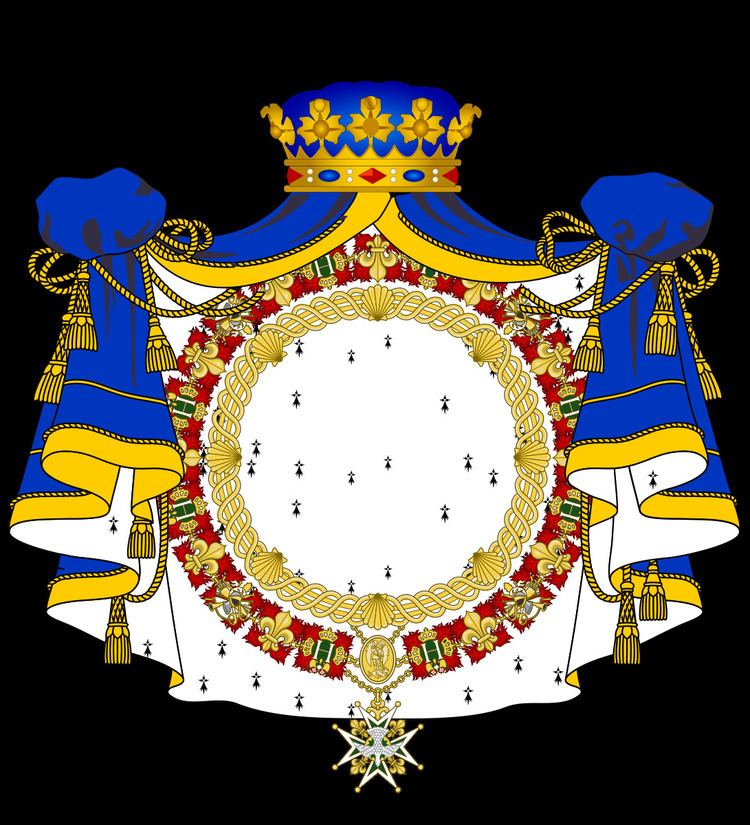 | ||
The peerage of France consists of the great officers, direct vassals of the Crown of France, with the title peer of France. They represent the primitive constituents of elective monarchy, before the succession became hereditary in the House of Capet.
Contents
Primitive peers
They were probably, at the time of the Frankish monarchy, the great princes and vassals who were called to choose a successor to king among the eligible princes to the crown.
Since 1180, they were responsible for ensuring the succession and were involved in the ceremony of coronation where each represents a symbolic function of the nomination.
Peerages created in the 13th century
In 1297, Philip IV of France created three new peerages, to replace some of the lay peerages which had merged into the crown (Normandy and Toulouse; while Champagne was held by Philip IV's wife, Joan I of Navarre). All three new peerages were created for nobles of Capetian descent.
Peerages created in the 14th century
Peerages created in the 14th century were for princes of the royal blood, most of which were for the Valois princes. One was created for the Count of Flanders.
Peerages created in the 15th century
In the fifteenth century, Charles VII began granting peerages to foreigners, to his Scottish allies in particular.
Peerages created in the 18th century
In 1789, there were 43 peers of which 6 were princes of the blood.
Peerages created in the 19th century
From 1814 to 1830 the number of peers increased from 154 to 365.
